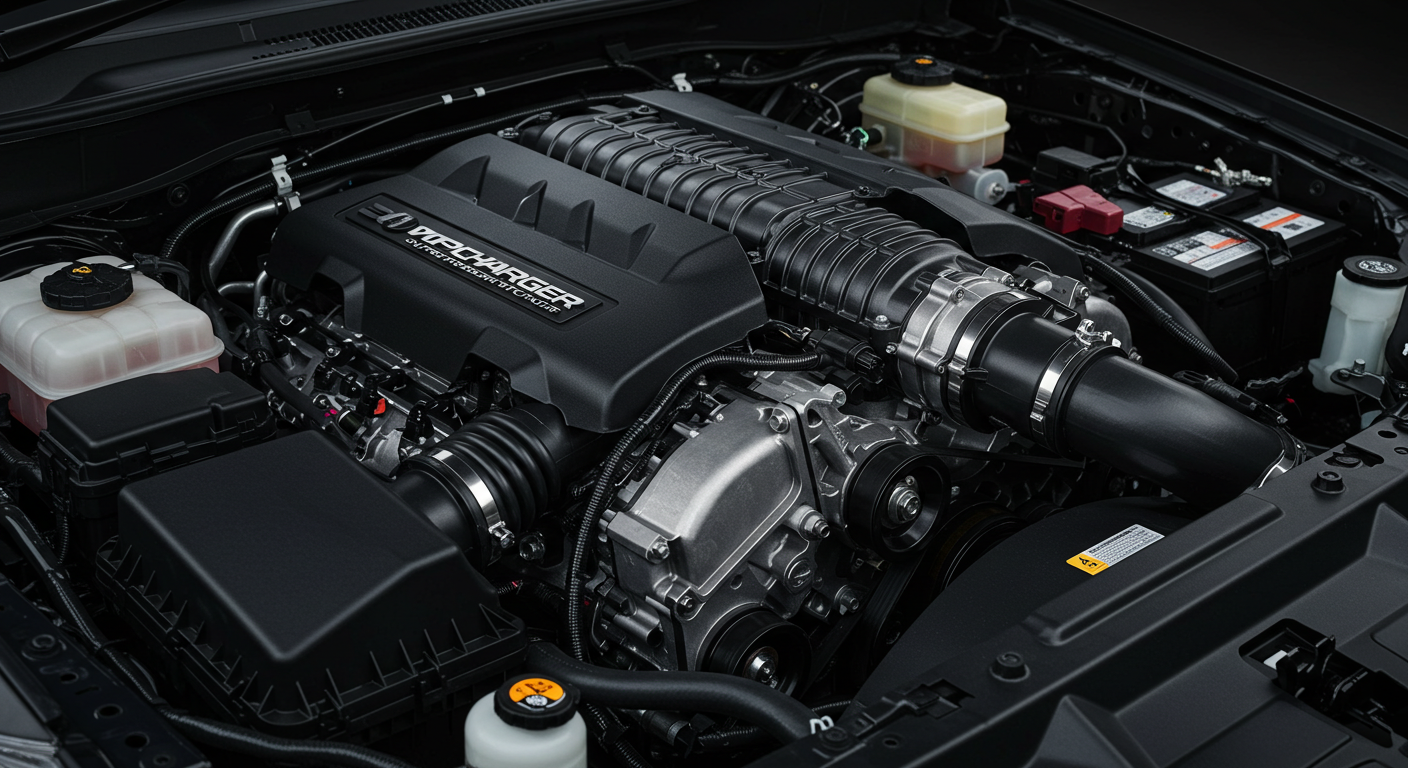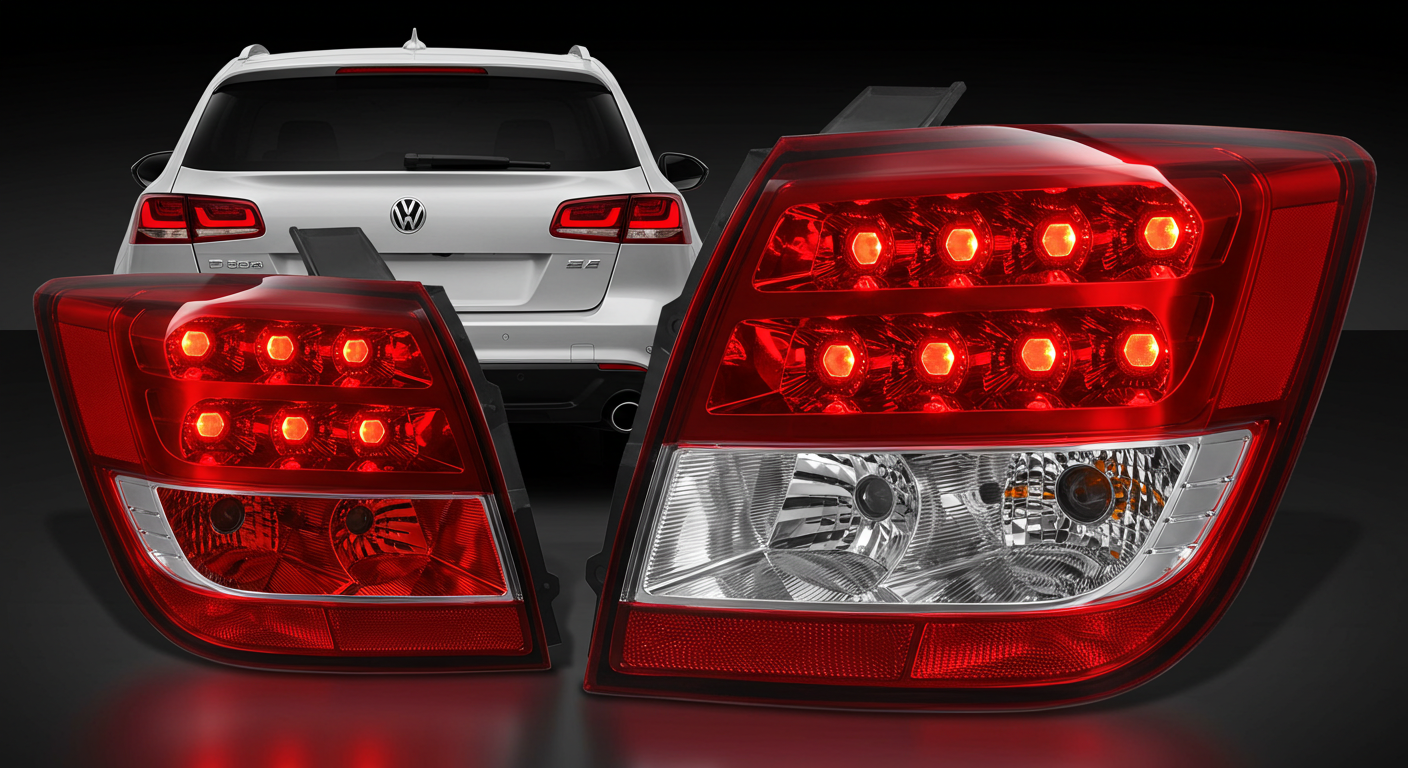Introduction to Car Safety Features
Car safety features play a crucial role in protecting occupants and improving the overall safety of vehicles. As the automotive industry has evolved, so too have the technologies and systems designed to enhance safety on the roads. Historically, vehicles were equipped with basic safety features such as seatbelts and crumple zones, but the significant advancements in technology have led to the incorporation of numerous modern safety innovations aimed at reducing accidents and fatalities.
The evolution of automotive safety features can be traced back to the introduction of mandatory seatbelt laws in the 1960s, which marked a significant turning point in vehicle safety regulations. Manufacturers began to prioritize occupant protection, leading to the development of airbags, which provide an additional layer of safety during collisions. As research into vehicle safety continues, the modern era has seen the emergence of advanced safety technologies, including electronic stability control, adaptive cruise control, and lane departure warning systems.
These advancements are not merely conveniences; they are fundamental components that contribute to the reduction of traffic accidents. For instance, anti-lock braking systems (ABS) have significantly changed how vehicles handle in emergency braking situations, thus preventing skidding and maintaining steering control. Furthermore, today’s vehicles may use sensors and cameras to detect obstacles, automatically applying brakes or providing warnings, which can avert potential collisions. Such innovations underscore the growing commitment of manufacturers to prioritize safety while enhancing the driving experience.
In this blog post, we will delve deeper into various modern car safety features, exploring how they work and their importance in significantly reducing the risks associated with driving. Understanding these features is essential for consumers who strive to make informed decisions when purchasing a vehicle, as well as for anyone interested in the ongoing efforts to improve road safety. The continuous improvement of car safety features illustrates the industry’s dedication to protecting drivers and passengers alike.
Airbags: The Lifesavers
Airbags are critical components of modern vehicle safety systems, designed to protect passengers during collisions by deploying rapidly at the moment of impact. The primary function of an airbag is to cushion the occupant and minimize the risk of serious injury by creating a barrier between the passenger and the hard surfaces of the vehicle. When a collision occurs, sensors within the vehicle detect the impact’s force and send a signal to the airbag control unit, which triggers an explosive charge to inflate the airbag almost instantaneously within fractions of a second. This swift deployment can significantly reduce the severity of injuries in various types of crashes.
There are several types of airbags commonly found in contemporary cars, each catering to specific safety needs. The frontal airbags, typically located in the steering wheel and dashboard, are the most common and provide protection in head-on collisions. Side airbags, which may be situated in the seat or door panels, offer additional protection against side-impact crashes. Curtain airbags expand from the roof area to shield passengers’ heads during rollovers or side impacts, while knee airbags protect lower-body regions such as the knees and thighs. Each of these airbag systems operates on different principles, allowing for more comprehensive occupant protection.
The ongoing advancements in airbag technology reflect a commitment to enhancing vehicle safety. For instance, newer systems include multi-stage airbags, which deploy with varying levels of force depending on the severity of the collision and the occupant’s position. Additionally, innovations like advanced sensing systems can better determine the appropriate response to a crash, tailoring deployment to specific scenarios. As safety standards continue to evolve, airbag systems are becoming more sophisticated, utilizing integrated technologies to ensure passenger protection remains at the forefront of automotive design.
Anti-lock Braking System (ABS) and Electronic Brake-force Distribution (EBD)
The Anti-lock Braking System (ABS) is a fundamental safety feature in modern vehicles designed to prevent wheel lock-up during braking. When a driver applies the brakes forcefully, ABS activates to modulate brake pressure, ensuring the wheels continue to rotate. This rotation is crucial for maintaining steering control during emergency braking situations. By preventing the wheels from locking, ABS allows the driver to maneuver the vehicle while decelerating, which can be critical for avoiding obstacles and ensuring safer stopping distances. The technology relies on wheel speed sensors, which detect any deceleration that exceeds normal limits, prompting the system to intervene and adjust brake pressure accordingly.
Complementing ABS is Electronic Brake-force Distribution (EBD), a system that further enhances braking performance by optimizing the distribution of brake force among the wheels. EBD works in conjunction with the ABS by monitoring the load on each wheel, which can vary based on factors such as vehicle weight, incline, and passenger distribution. The primary advantage of this system is that it automatically reallocates brake force to the wheels that can handle it best. For example, during a hard stop, if the rear wheels are carrying less weight, EBD ensures that more braking power is applied to the front wheels, enhancing stability and control.
Integrating ABS and EBD activates a synergistic effect that significantly improves vehicle safety. These systems work together to not only maintain traction but also optimize braking performance under different driving conditions. Consequently, drivers benefit from heightened confidence, knowing their vehicle is equipped with advanced safety technologies designed to respond effectively in critical situations. Therefore, understanding how ABS and EBD operate is essential for recognizing their contribution to modern car safety features and their role in accident prevention.
Adaptive Cruise Control and Collision Avoidance Systems
Adaptive cruise control (ACC) is an advanced driver-assistance system designed to enhance vehicle safety and improve driving comfort. This technology allows vehicles to automatically adjust their speed in response to the traffic conditions around them. Utilizing sensors, radar, and cameras, ACC can maintain a pre-set following distance from the vehicle ahead. When the leading vehicle slows down, adaptive cruise control responds by reducing the speed of the car, thus ensuring a safe distance is maintained. Conversely, if the road ahead is clear, it will accelerate back to the pre-set speed. This seamless adjustment helps alleviate the stress of constant manual speed adjustments, particularly during long journeys.
Alongside adaptive cruise control, collision avoidance systems play an essential role in modern automobile safety. These systems incorporate a suite of technologies aimed at preventing accidents by detecting potential hazards. A crucial component of these systems is automatic emergency braking (AEB), which activates when a collision is imminent. Using sensors, the AEB system continuously monitors the road ahead for obstacles—including vehicles, pedestrians, and cyclists. If it determines that a collision is likely and the driver has not reacted in time, AEB autonomously initiates braking, significantly reducing the severity of impact or potentially avoiding the crash altogether.
Furthermore, collision avoidance technologies may include lane departure warnings, which alert drivers if they unintentionally drift out of their lanes, as well as blind-spot monitoring, which helps detect vehicles in areas that are not visible in the side mirrors. Together, these systems represent a significant advancement in automobile safety, aiming to create a safer driving experience while reducing the likelihood of accidents on the road. As vehicles increasingly incorporate these intelligent technologies, drivers can enjoy enhanced safety and peace of mind during their travels.
Lane Departure and Lane Keeping Assist Technologies
Modern vehicles are equipped with advanced safety features designed to minimize the risk of accidents, and two notable technologies in this arena are lane departure warning systems and lane keeping assist. These systems work in tandem to enhance the driver’s awareness and control while on the road.
Lane departure warning (LDW) systems utilize an array of sensors, primarily cameras and radar, to monitor the vehicle’s position within the lane markings. When the system detects that the vehicle is drifting out of its lane without a turn signal indicating a lane change, it activates an alert. The alert may come in the form of visual warnings on the dashboard or through audible signals. Some advanced systems may also use haptic feedback, such as vibrating the steering wheel, to draw the driver’s attention to the potential hazard.
Complementing lane departure warnings, lane keeping assist (LKA) takes the technology a step further by actively assisting the driver in maintaining lane position. When activated, LKA systems can provide steering inputs to gently guide the car back into its designated lane, helping prevent unintentional drift. This is particularly beneficial in situations where the driver may be distracted or fatigued. LKA utilizes the same sensor technology as LDW but goes beyond passive alerts by intervening in the steering process to ensure safe lane discipline.
Both technologies often rely on machine learning algorithms to adapt to different driving conditions and improve their effectiveness over time. However, it is crucial for drivers to remain engaged and not to treat these systems as substitutes for direct control. While LDW and LKA significantly enhance safety, they are designed to assist, not replace, attentive driving practices. Consequently, understanding these systems and their functions can contribute meaningfully to overall road safety.
Blind Spot Detection and Rear-View Cameras
Modern vehicles are equipped with an array of safety features designed to enhance driver awareness and reduce the risk of accidents. Among these technologies, blind spot detection systems have emerged as a crucial advancement in automobile safety. These systems function by utilizing sensors installed in the rear corners of the vehicle to monitor adjacent lanes. When another vehicle enters the driver’s blind spot—an area that is not visible through traditional mirrors—the system alerts the driver through visual or audible warnings. This proactive approach significantly improves safety during lane changes, as it allows drivers to make informed decisions and prevents potential collisions caused by unseen vehicles.
In addition, rear-view cameras play an essential role in enhancing visibility while reversing. These cameras provide a wide-angle view of the area directly behind the vehicle, allowing drivers to see obstacles, pedestrians, or other vehicles that may be in their path. The images captured by these cameras are typically displayed on a screen located within the vehicle’s dashboard. Many rear-view camera systems are complemented by guidelines that assist the driver in judging distances and angles, further increasing maneuverability in tight spaces. The integration of rear-view cameras as standard equipment in many new vehicles reflects their importance in promoting safety and preventing accidents while reversing.
Both blind spot detection systems and rear-view cameras contribute to an overall safer driving experience. By effectively addressing the common areas of visibility challenges, these safety features empower drivers, ultimately resulting in reduced accident rates and safer roads. Awareness and understanding of these modern car safety technologies are essential for maximizing their effectiveness and ensuring responsible driving practices.
Vehicle Stability Control (VSC) and Traction Control
Modern vehicles are equipped with advanced safety features designed to enhance driving stability and control. Among these features, Vehicle Stability Control (VSC) and Traction Control play crucial roles in maintaining vehicle safety during challenging driving conditions. VSC is particularly effective in preventing skidding and loss of control during extreme steering maneuvers. The system continuously monitors the vehicle’s motion and, upon detecting any deviation from the intended path, can intervene by applying brakes to individual wheels. This corrective action helps to stabilize the vehicle, allowing the driver to regain control and prevent potential accidents.
The functionality of VSC is largely reliant on a network of sensors that track vehicle dynamics, including speed, steering angle, and lateral acceleration. In circumstances where the vehicle begins to understeer or oversteer, VSC activates to adjust braking force and engine power as needed. This not only aids in keeping the vehicle on its intended path but also enhances overall driver confidence, especially in adverse weather conditions.
Alongside VSC, Traction Control Systems (TCS) are invaluable, particularly when accelerating on slippery surfaces, such as rain-soaked roads or icy pavements. TCS works by detecting wheel spin, which typically occurs when the driving wheels lose grip during acceleration. Upon recognizing this loss of traction, TCS can temporarily reduce engine power or apply brakes to the spinning wheels. This functionality ensures that the vehicle maintains optimal traction and stability, therefore preventing slipping and improving overall handling.
Together, VSC and TCS provide significant contributions to the safety features of modern vehicles, addressing both stability during cornering and traction during acceleration. These systems have become indispensable, aiding drivers in navigating challenging conditions more safely and effectively. Such technological advancements underscore the importance of safety in contemporary automotive design.
The Role of Advanced Driver Assistance Systems (ADAS)
Advanced Driver Assistance Systems (ADAS) represent a significant leap in automotive technology, designed primarily to improve vehicle safety and enhance the driving experience. These systems utilize a variety of sensors, cameras, and radar to monitor the vehicle’s surroundings, enabling them to assist drivers in making informed decisions on the road. When combined with machine learning algorithms, ADAS technologies gather data over time, allowing the vehicle to better understand and respond to different driving scenarios.
One of the core functions of ADAS is collision avoidance, achieved through features such as Automatic Emergency Braking (AEB) and Forward Collision Warning (FCW). These systems continuously analyze the proximity of other objects, including vehicles and pedestrians, alerting the driver of potential hazards. If the driver fails to respond in time, the AEB feature can automatically engage the brakes to mitigate or avoid a collision. Similarly, Lane Departure Warning (LDW) and Lane Keeping Assist (LKA) aid in maintaining a vehicle’s position within its lane, thereby reducing the risk of accidents caused by unintended lane departures.
Another critical aspect of ADAS is adaptive cruise control, which adjusts the vehicle’s speed based on the traffic flow. This technology not only enhances comfort but also contributes to road safety by maintaining safe distances between vehicles. Moreover, parking assistance technologies, including Rear Cross-Traffic Alert and Park Assist, facilitate the process of parking and maneuvering in tight spaces, further showcasing the multifaceted nature of ADAS technologies.
The synergy of these advanced driver assistance features underlines the importance of ADAS in modern driving. By leveraging sensor technology and machine learning, these systems continuously evolve, providing a more connected and safer driving environment. The integration of ADAS into vehicles not only helps prevent accidents but also fosters a greater sense of confidence among drivers, ultimately leading to safer roads for everyone.
Conclusion: The Future of Car Safety Features
As we navigate through an era of rapid technological advancements, the evolution of car safety features continues to gain momentum. Innovations in automotive safety technologies are not only transforming the way we drive but also significantly enhancing the protection of occupants and pedestrians alike. Modern vehicles are now equipped with a multitude of features designed to prevent accidents, provide assistance during emergencies, and minimize the risk of injury in the event of a collision.
Today’s car safety systems, including advanced driver-assistance systems (ADAS), automated braking, and collision avoidance technologies, have become pivotal in safeguarding lives. The integration of sensors, cameras, and sophisticated algorithms allows these systems to analyze real-time data and respond to potentially hazardous situations. This continuous feedback loop enhances the awareness of drivers while contributing to the overall reduction of road accidents.
Looking forward, the future of car safety features appears promising as manufacturers and technology developers increasingly prioritize safety in their designs. The advent of autonomous vehicles heralds a new era where human errors can be significantly mitigated. Innovations such as vehicle-to-everything (V2X) communication hold the potential to create a connected ecosystem, where cars communicate with each other and surrounding infrastructures to enhance overall safety.
Moreover, the incorporation of artificial intelligence in safety systems is expected to refine predictive analytics, enabling vehicles to anticipate and respond to dangerous situations before they occur. As developments in robotics, machine learning, and data analytics continue to unfold, we can anticipate a future where car safety features are even more sophisticated, making driving safer than ever before.
In conclusion, the ongoing advancements in automotive safety technologies are crucial in preventing accidents and saving lives. As we embrace the transformative technologies of the future, it becomes essential for all stakeholders in the automotive industry to commit to safety, paving the way for a safer driving experience for everyone.









